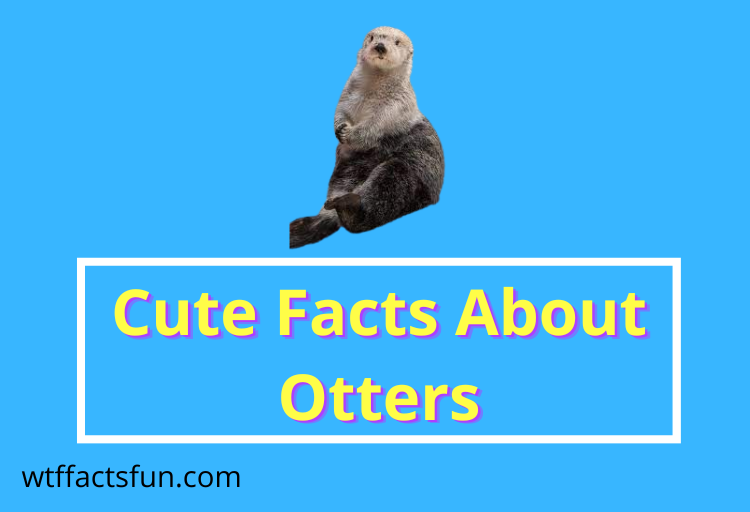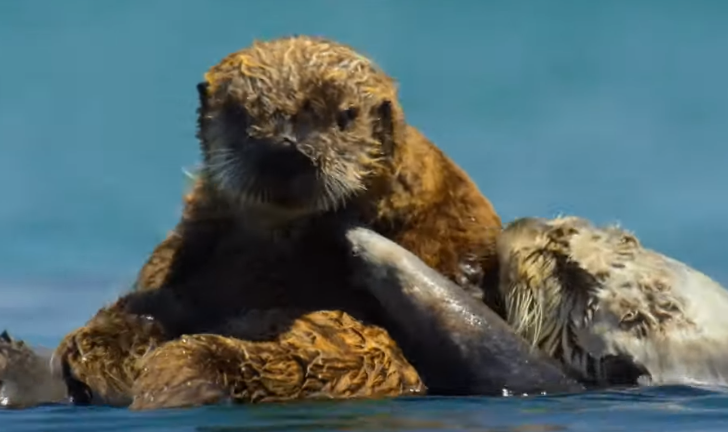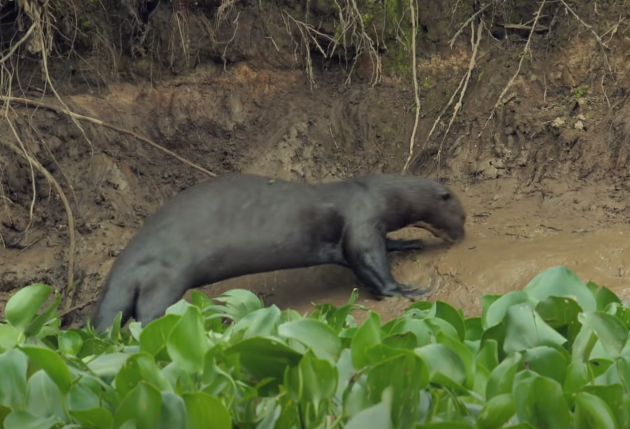
Table of Contents
Cute Facts About Otters
Cute Facts About Otters: The world we live in is full of fascinating animals some weird and strange looking some fierce and ferocious and so many animals that are simply cute and fun to watch. We take a closer look at one of the world’s cutest creatures the otter. What do you know about the otter have you ever had the chance to see one up close well sit back and relax as we learn some cute fun facts that are utterly amazing. Otters are full of personality and fun creatures to watch they are endearing and highly intelligent creatures.
- It may shock you to know that they have been around for more than 5 million years.
- Otters are carnivorous mammals in the subfamily lutrine. Out of the 13 species of otters, some are semi-aquatic, which means that they spend part of their time in the water.
- Some otters are aquatic, meaning they spend all of their time in the water and need it to survive or some are marine. We found otters all over the world except for Australia and Antarctica.
- We know otters for preying on hard-shelled marine invertebrates, including abalones, sea urchins, clams, mussels and crabs, usually fracturing the shells with their teeth.
- A sea otter can consume up to 11 kilograms or 24 pounds of food every day to support its high metabolism that’s about a quarter of its own body weight.
- Otters typically live 15 to 20 years in captivity, but the wild river otter’s lifespan is dramatically lower than most life to be no more than eight or nine years old.

- Otters are omnivores as they do eat seaweed and other aquatic plants despite this though most sea otters have a primarily carnivorous diet with sea otters known to eat more than 40 different species of marine animals they are smart agile and strong predators they do eat a lot of amphibians and fish but they’ll also take out sizable beavers raccoons plus snapping turtles snakes and small gators, of course, an alligator can also eat an otter so it goes both ways call it survival of the fittest.
- When it comes to gender, the male otters are called boars, females are sows and the offspring are pups, just not the kind of pup you should keep in your house.
- The size of the river otter is between 87 to 153 centimetres, or 34 to 60 inches and 3 to 14 kilograms, or 7 to 31 pounds. Some are fairly larger. An example is the North American river otter with a size of about 100 to 153 centimetres that’s 39 to 60 inches. Smaller otters such as marine otters can range from 87 to 115 centimetres or 34 to 45 inches.
- Like most predators, this animal has its own defence mechanism: no guns, no armoury, no artilleries. How do they protect? themselves well, there is a particular species of this creature called the sea otter. It is the only species with a shorter and less muscular tail. Others use their tail as a dangerous weapon used to navigate their dynamic movements in and around the water. They use their tails to ward off all forms of enemies in their existence.
- Many otters are semi-aquatic, meaning they spend their time on land and water. The exception is the sea otter, which does spend almost all of its time in the water.
- We found otters almost all over the world and in many wet habitats such as freshwater rivers, lakes oceans coastlines and marshes most otters live in dens built by other animals such as beavers that are dug into the ground and have many channels and dry inner chambers.
- When you talk about associations, otters are very closely related to mink ferrets and badgers. Although they are often mistaken for beavers, they are actually not related. In fact, in their family line, they are more closely related to the skunk.

- Speaking of smelly due to their lengthy heights right from birth, otters produce a strong, disagreeable scent from their anal glands and they have especially smelly poop, perhaps from a diet of fish crab and other sea creatures. This is a very important fact to keep in mind if you ever thought it would be fun to have an otter as a house pet.
- Otters have the thickest fur of any mammal and they are obsessed with keeping their fur clean. Sea otters are members of the weasel family, like other members of this family. They have very thick fur, in fact at eight hundred and fifty thousand to one million hairs per square inch. They have the thickest fur of any mammal. Their fur actually consists of two layers, an undercoat and longer guard hairs.
- The tails of river otters and clawless otters are long and about one-third of total body length they are thick at the base muscular flexible and taper to a point the giant otter’s tail is similar to those of other freshwater otters apart from using it to defend itself the otter’s tail also helps it steer through water.
- The otter could easily pass for a great sea diver. This creature can dive up to 300 feet to go after its prey in such scavenging conditions they have the capacity to remain underwater for up to four minutes.
- Otters make a lot of sounds. River otters like to make lots of noise. When they play with each other, they may chirp, purr squeal, or make gurgling sounds.
- When they’re having a good time, popular otter games include sliding down muddy banks wrestling tumbling and chasing one another on land and in the water with a non-stop babble of hums grunts and shrill squeaks as they argue over fish and defend their territories. The amazon’s giant otters are one of nature’s noisiest animals.
- River otters are social creatures that use a variety of sounds to communicate whether one is alerting another otter of an approaching predator or simply expressing satisfaction over a good meal.
- Otters also display some human traits from time to time. Otters hold hands. They do this often when. sleeping. This is to keep them from floating away from each other when they are in groups called. rafts, the mother and pup will hold hands. It’s a resting position for them not to drift off from each other or the rest of their group. The rafts keep track of each other by keeping an eye open, listening and keeping in touch through the occasional tale and flipper contact.
- Otters juggle rocks studies find that they juggle pebbles when hungry, whether tossing pebbles between their paws or rolling stones on their chest and even into their mouth otters are experts at rock juggling.
- Otters make and use tools. Sea otters are unique for being the only marine mammal to use stone tools. They often use rocks to crack open shells while floating on their back and also sometimes use stationary rocks along the shoreline.
Final words:
We hope you’ve enjoyed the post cute facts about otters. You can share this post with your friends and relatives so they can also know fun facts about otters.
Read also:
Top Boston Tea Party Facts for Kids
25 Facts About the Amazon Rainforest for Kids